Op-ed | Preparing for Maneuver Warfare in Space – The Next Battleground
Wednesday, 17 August 2022 12:11
A historical warfare perspective on enhancing satellite survivability and ensuring commercial satellites are more agile in today’s threat environment.
The post Op-ed | Preparing for Maneuver Warfare in Space – The Next Battleground appeared first on SpaceNews.
Rhine river runs dry
Wednesday, 17 August 2022 09:20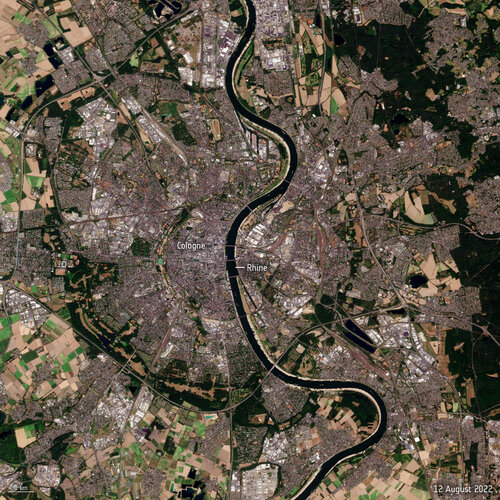 Image:
Water levels on the Rhine River have continued to drop owing to soaring temperatures and lack of rainfall - preventing many vessels from navigating through the river's waters at full capacity. These Copernicus Sentinel-2 images show the stark difference between August 2021 and August 2022.
Image:
Water levels on the Rhine River have continued to drop owing to soaring temperatures and lack of rainfall - preventing many vessels from navigating through the river's waters at full capacity. These Copernicus Sentinel-2 images show the stark difference between August 2021 and August 2022. Seeking Regulatory Mercy: The case for extending constellation deployment deadlines
Wednesday, 17 August 2022 07:00
Will regulators show mercy for constellation hopefuls battling unprecedented manufacturing and launch constraints outside their control?
The post Seeking Regulatory Mercy: The case for extending constellation deployment deadlines appeared first on SpaceNews.
SOLARIS: Preparing for Space-Based Solar Power
Wednesday, 17 August 2022 07:00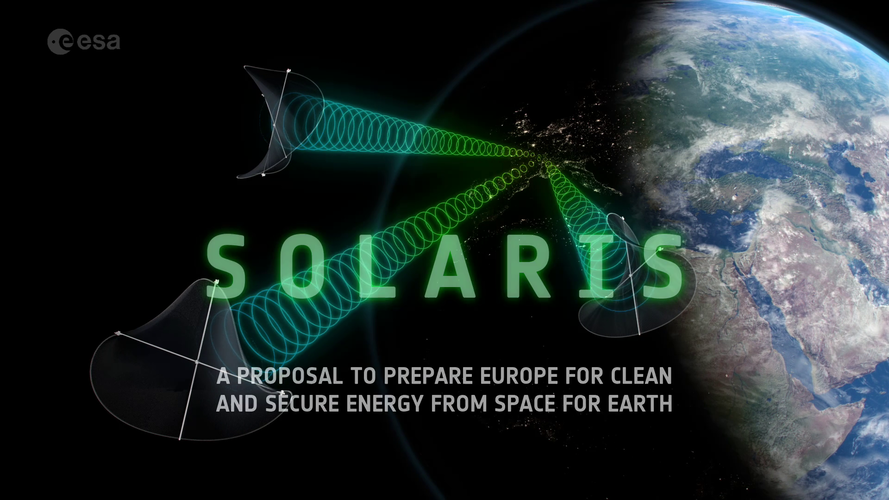 Video:
00:03:33
Video:
00:03:33
To prepare Europe for future decision making on Space-Based Solar Power, ESA has proposed a preparatory programme for Europe, initially named SOLARIS, for the upcoming ESA Council at Ministerial Level in November 2022.
Space-based solar power is a potential source of clean, affordable, continuous, abundant and secure energy. This basic concept has been given fresh urgency by the need for new sources of clean and secure energy to aid Europe’s transition to a Net Zero carbon world by 2050. If Europe wants to benefit from this game-changing capability then we need to start investing now.
ESA has undertaken
Mars model provides method for landing humans on Red Planet
Wednesday, 17 August 2022 05:36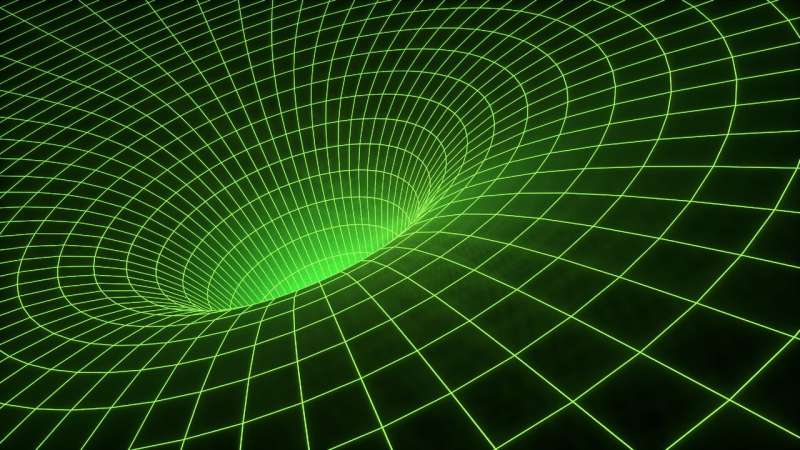
A mathematical model developed by space medicine experts from The Australian National University (ANU) could be used to predict whether an astronaut can safely travel to Mars and fulfil their mission duties upon stepping foot on the Red Planet.
The ANU team simulated the impact of prolonged exposure to zero gravity on the cardiovascular system to determine whether the human body can tolerate Mars' gravitational forces—which aren't as strong as on Earth—without fainting or suffering a medical emergency when stepping out of a spacecraft.
The model could be used to assess the impact of short and long duration space flight on the body and could serve as another important piece of the puzzle in helping land humans on Mars.
Dr. Lex van Loon, a Research Fellow from the ANU Medical School, said although there are multiple risks associated with travelling to Mars, the biggest concern is prolonged exposure to microgravity—near zero gravity—which, combined with exposure to damaging radiation from the Sun, could cause "fundamental" changes to the body.
"We know it takes about six to seven months to travel to Mars and this could cause the structure of your blood vessels or the strength of your heart to change due to the weightlessness experienced as a result of zero gravity space travel," Dr.
NASA's Lucy team discovers moon around asteroid Polymele
Wednesday, 17 August 2022 05:26
Even before its launch, NASA's Lucy mission was already on track to break records by visiting more asteroids than any previous mission. Now, after a surprise result from a long-running observation campaign, the mission can add one more asteroid to the list.
On March 27, Lucy's science team discovered that the smallest of the mission's Trojan asteroid targets, Polymele, has a satellite of its own. On that day, Polymele was expected to pass in front of a star, allowing the team to observe the star blink out as the asteroid briefly blocked, or occulted, it. By spreading 26 teams of professional and amateur astronomers across the path where the occultation would be visible, the Lucy team planned to measure the location, size, and shape of Polymele with unprecedented precision while it was outlined by the star behind it.
Ball and Seagate test data storage devices for satellites
Wednesday, 17 August 2022 02:22
Ball Aerospace and Seagate Technology Holdings are working together to develop and test high-capacity commercial data processing and storage devices for spaceflight applications.
The post Ball and Seagate test data storage devices for satellites appeared first on SpaceNews.
AST SpaceMobile delays commercial satellite debut by six months
Tuesday, 16 August 2022 21:20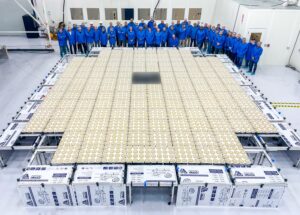
Supply chain issues have pushed out the launch of AST SpaceMobile’s first operational satellite about six months to late 2023, the cellphone-compatible broadband constellation startup said Aug. 15.
The post AST SpaceMobile delays commercial satellite debut by six months appeared first on SpaceNews.
Blue Origin scraps original recovery ship for New Glenn boosters
Tuesday, 16 August 2022 20:53
A large ship that Blue Origin planned to convert into a landing platform for New Glenn boosters is instead being sent to the scrapyard as the company changes its recovery plans.
The post Blue Origin scraps original recovery ship for New Glenn boosters appeared first on SpaceNews.
Orion Space wins U.S. Space Force contract for on-orbit services experiment
Tuesday, 16 August 2022 19:48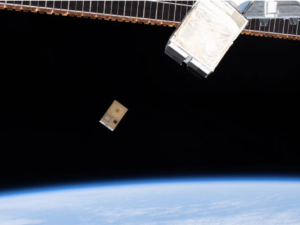
Orion Space Solutions announced Aug. 16 it was selected by the U.S. Space Force to develop three small satellites for a demonstration of on-orbit services in geostationary Earth orbit.
The post Orion Space wins U.S.
NASA's Europa Clipper spacecraft kicks assembly into high gear
Tuesday, 16 August 2022 16:12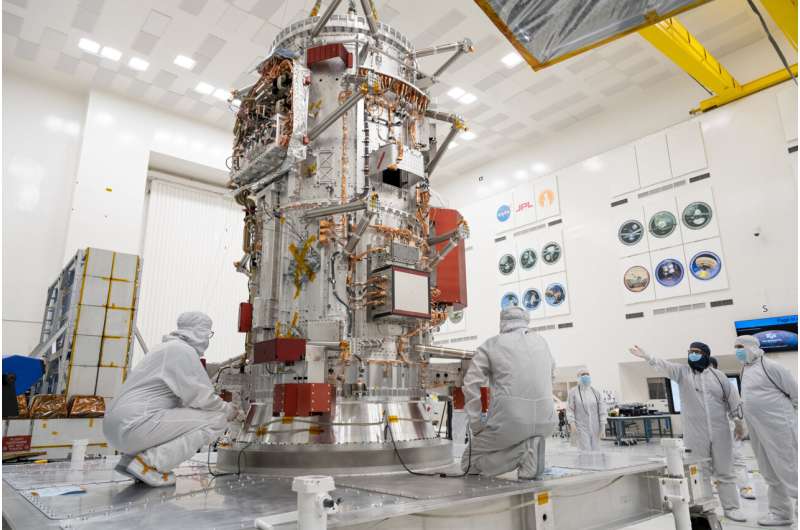
The core of NASA's Europa Clipper spacecraft has taken center stage in the Spacecraft Assembly Facility at the agency's Jet Propulsion Laboratory in Southern California. Standing 10 feet (3 meters) high and 5 feet (1.5 meters) wide, the craft's main body will for the next two years be the focus of attention in the facility's ultra-hygienic High Bay 1 as engineers and technicians assemble the spacecraft for its launch to Jupiter's moon Europa in October 2024.
Scientists believe the ice-enveloped moon harbors a vast internal ocean that may have conditions suitable for supporting life. During nearly 50 flybys of Europa, the spacecraft's suite of science instruments will gather data on the moon's atmosphere, surface, and interior—information that scientists will use to gauge the depth and salinity of the ocean, the thickness of the ice crust, and potential plumes that may be venting subsurface water into space.
Harvesting resources on Mars with plasmas
Tuesday, 16 August 2022 14:17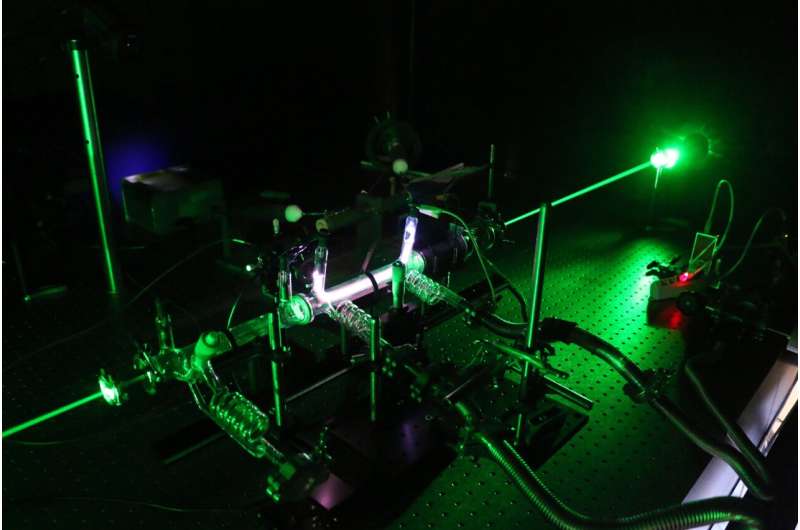
An international team of researchers came up with a plasma-based way to produce and separate oxygen within the Martian environment. It's a complementary approach to NASA's Mars Oxygen In-Situ Resource Utilization Experiment, and it may deliver high rates of molecule production per kilogram of instrumentation sent to space.
Such a system could play a critical role in the development of life-support systems on Mars and the feedstock and base chemicals necessary for processing fuels, building materials, and fertilizers.
In the Journal of Applied Physics, the team from the University of Lisbon, the Massachusetts Institute of Technology, Sorbonne University, Eindhoven University of Technology, and the Dutch Institute for Fundamental Energy Research presented a method for harnessing and processing local resources to generate products on Mars.
On National Security | SmallSat Alliance steps up push for a military comms ‘outernet’
Tuesday, 16 August 2022 13:15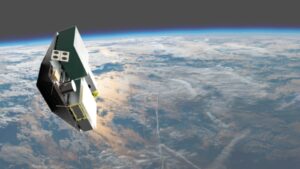
A legislative proposal in the 2023 defense spending bill calling on DoD to leverage commercial space networks marks a victory of sorts for the SmallSat Alliance.
The post On National Security | SmallSat Alliance steps up push for a military comms ‘outernet’ appeared first on SpaceNews.
War in Ukraine highlights the growing strategic importance of private satellite companies
Tuesday, 16 August 2022 12:27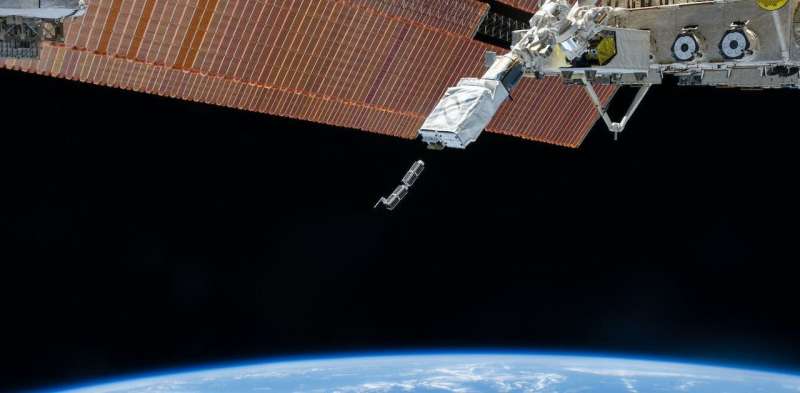
Satellites owned by private companies have played an unexpectedly important role in the war in Ukraine. For example, in early August 2022, images from the private satellite company Planet Labs showed that a recent attack on a Russian military base in Crimea caused more damage than Russia had suggested in public reports. Ukrainian President Volodymyr Zelenskyy highlighted the losses as evidence of Ukraine's progress in the war.
Soon after the war began, Ukraine requested data from private satellite companies around the world. By the end of April, Ukraine was getting imagery from U.S. companies mere minutes after the data was collected.
My research focuses on international cooperation in satellite Earth observations, including the role of the private sector.
NASA moves up launch of massive moon rocket
Tuesday, 16 August 2022 11:14 NASA announced Monday that it will roll out its Artemis I Moon rocket on Tuesday evening, which is two days earlier than originally planned.
Tuesday's planned roll out represents the final prelaunch test before the scheduled launch on Aug. 29. The uncrewed test flight will remain in space for 42 days before returning to Earth.
Rick LaBrode, the lead flight director for Artemis I,
NASA announced Monday that it will roll out its Artemis I Moon rocket on Tuesday evening, which is two days earlier than originally planned.
Tuesday's planned roll out represents the final prelaunch test before the scheduled launch on Aug. 29. The uncrewed test flight will remain in space for 42 days before returning to Earth.
Rick LaBrode, the lead flight director for Artemis I, 
